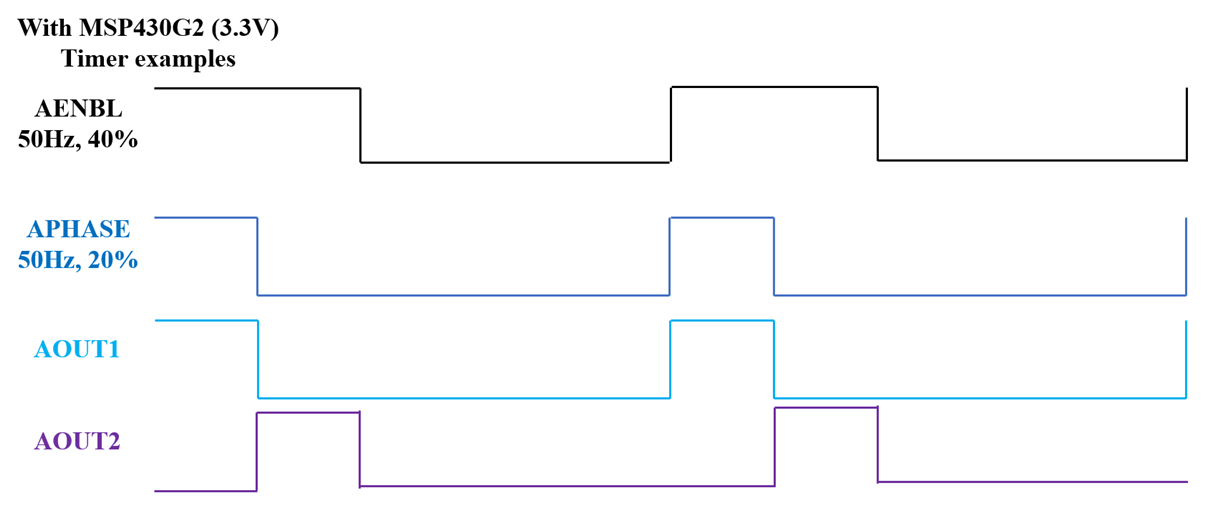Hi, I'm trying to use the DRV8802PWPR with the MSP-EXP430G2 launchpad.
I'm just controlling two DC motors. Since DRV8802PWPR has two outputs, this is perfect for me.
I got some questions.
Q0. Difference between -Q1 products.
I have purchased the DRV8802PWPR from Digikey. Whereas I saw DRV8802QPWPRQ1, which has Q1, is also sold. What is the difference between these two?
Q1. App example
For my case, I only need to control the speed and direction of each motor.
I'm trying to connect 2MHz 15% duty cycle PWM signal on AENBL pin and BENBL pin to control the output duty cycle.
Can AENBL pin and BENBL pin respond to MHz range on/off signals? I cannot find the pin's response from the datasheet.
Q2. I'm having a problem understanding the "Reference voltage for winding current set."
What are a winding current and current chopping?
Q3. ISEN - Connect to current sense resistor for bridge A/B
Why did the above application use a voltage divider for the reference? I'm confused with what reference I should provide.
For my case, I want to limit the current to 400mA for both outputs.






